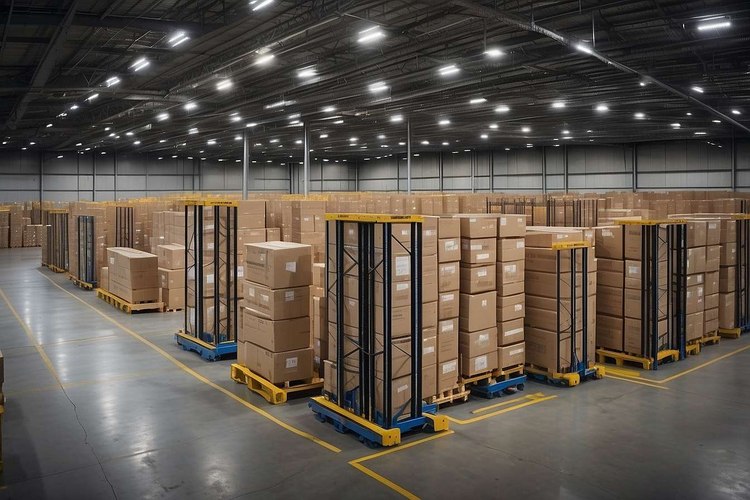The Impact of Online Retail on Warehouse Packaging Employment
In today's fast-paced global economy, the role of packing jobs has become increasingly crucial. These positions play a vital part in various industries, from e-commerce and retail to manufacturing and logistics. Packing jobs involve carefully preparing and packaging products for shipment or storage, ensuring they reach their destination safely and in perfect condition. As consumer demands for faster delivery and better product protection grow, the importance of skilled packers continues to rise.

The rise of online retail has reshaped global commerce, creating unprecedented demand for efficient warehouse operations and packaging services. Distribution centers have become critical hubs in the supply chain, connecting online merchants with consumers worldwide. This transformation has generated substantial changes in the packaging employment landscape while simultaneously altering the nature of this type of work.
What exactly does a packing job entail?
Packaging positions in warehouse environments involve preparing products for shipment to customers. Workers typically retrieve items from storage locations, verify order accuracy, and secure products using appropriate materials such as boxes, bubble wrap, or protective padding. The role requires attention to detail, as proper packaging ensures items arrive undamaged and meet customer expectations.
Daily responsibilities often include scanning barcodes to track inventory, applying shipping labels, and organizing packed items for dispatch. Many facilities use conveyor systems and automated sorting technology, requiring workers to maintain pace with mechanized processes. Physical stamina is important, as the work involves standing for extended periods and handling packages of varying weights throughout shifts.
How has the e-commerce boom affected packing jobs?
Online retail expansion has significantly influenced employment patterns in warehouse packaging sectors. Major distribution networks have opened numerous fulfillment centers to meet increasing order volumes, particularly during peak shopping seasons. This growth has altered the landscape of entry-level warehouse positions and workforce dynamics.
The industry has also experienced technological integration, with facilities implementing automation systems alongside human workers. While some tasks have become mechanized, the need for human judgment in handling diverse products, managing exceptions, and ensuring quality control remains essential. This evolution has shifted some packaging roles toward oversight of automated systems and problem-solving functions.
Seasonal fluctuations have become more pronounced, with retailers significantly expanding temporary workforces during high-demand periods. This pattern creates variability in workforce composition and employment stability throughout the year.
What skills and qualities are essential for success in packing jobs?
Successful packaging workers demonstrate strong organizational abilities and consistent attention to accuracy. The capacity to follow detailed instructions while maintaining productivity standards is fundamental. Physical fitness supports the demands of repetitive motions, lifting, and sustained standing that characterize these positions.
Basic technological literacy has become increasingly important as warehouses adopt digital inventory systems and handheld scanning devices. Workers must navigate computerized interfaces to process orders and track shipments. Time management skills help employees meet productivity targets while maintaining quality standards.
Reliability and punctuality are highly valued, as warehouse operations depend on coordinated team efforts to fulfill daily shipping schedules. The ability to work effectively in fast-paced environments with minimal supervision contributes to long-term success in these roles.
How can one get started in a packing career?
Entry into warehouse packaging typically requires minimal formal education, with most employers providing on-the-job training. The field generally involves demonstrating physical capability to perform required tasks and meeting standard industry requirements. Background checks are common in logistics industries, and some facilities may have additional screening protocols.
Initial experience through temporary or seasonal positions has historically provided pathways for some individuals to gain familiarity with warehouse environments. The industry structure varies considerably by region, employer, and economic conditions, making general predictions about employment pathways difficult to establish.
What are the career advancement opportunities in packing?
Warehouse packaging can potentially serve as an entry point to broader logistics careers within organizational structures. Workers who demonstrate strong performance may have possibilities to advance to lead positions, overseeing teams of packers and coordinating workflow. Quality control roles offer another potential progression path, involving inspection of packaging standards and process improvement.
Some employees have historically transitioned into inventory management, shipping coordination, or equipment operation positions. Larger organizations may provide training programs that develop skills for supervisory or specialized technical roles. Cross-training in multiple warehouse functions can increase versatility within the field.
Experience in packaging operations may inform transitions to related fields such as supply chain management, logistics planning, or warehouse operations management. Advancement timelines and possibilities vary significantly by organization, individual circumstances, and market conditions.
The intersection of e-commerce growth and warehouse employment continues to evolve as technology advances and consumer expectations shift. Packaging roles remain integral to fulfillment operations, adapting to new tools and processes while maintaining the essential human elements of quality assurance and problem-solving. Understanding these dynamics provides valuable perspective on contemporary employment landscapes shaped by digital commerce.




